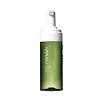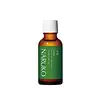What's inside
What's inside
 Key Ingredients
Key Ingredients

 Benefits
Benefits

 Concerns
Concerns

 Ingredients Side-by-side
Ingredients Side-by-side

Salicylic Acid 2%
MaskingSulfur 0.025%
AntiseborrhoeicWater
Skin ConditioningAlcohol
AntimicrobialZinc Oxide
Cosmetic ColorantButylene Glycol
HumectantPolysorbate 80
EmulsifyingOlive Oil PEG-7 Esters
EmollientMagnesium Aluminum Silicate
AbsorbentPyridoxine Hcl
Skin ConditioningPropylene Glycol
HumectantParfum
MaskingZinc PCA
HumectantPhenoxyethanol
PreservativePentylene Glycol
Skin ConditioningGlycerin
HumectantMenthol
MaskingPEG-40 Hydrogenated Castor Oil
EmulsifyingCamphor
MaskingPanthenol
Skin ConditioningAllantoin
Skin ConditioningMentha Viridis Leaf Oil
AstringentHamamelis Virginiana Water
AstringentSpiraea Ulmaria Flower Extract
Skin ConditioningChamomilla Recutita Flower Extract
MaskingLens Esculenta Seed Extract
Skin ProtectingIodopropynyl Butylcarbamate
PreservativeCI 77015
Cosmetic ColorantPotassium Sorbate
PreservativeSodium Benzoate
MaskingMelaleuca Alternifolia Leaf Oil
AntioxidantTremella Fuciformis Sporocarp Extract
AntioxidantEthylhexylglycerin
Skin ConditioningMethylpropanediol
SolventKalanchoe Pinnata Leaf Extract
MaskingChlorphenesin
AntimicrobialArtemisia Umbelliformis Extract
Skin ConditioningEpilobium Fleischeri Extract
Skin ConditioningLeontopodium Alpinum Extract
Skin ConditioningCitric Acid
BufferingCamellia Sinensis Leaf Extract
AntimicrobialPeucedanum Ostruthium Leaf Extract
Skin ConditioningScutellaria Alpina Flower/Leaf/Stem Extract
Skin ConditioningCalendula Officinalis Flower Extract
MaskingGlycyrrhiza Glabra Root Extract
BleachingGinkgo Biloba Leaf Extract
Skin ConditioningSalicylic Acid 2%, Sulfur 0.025%, Water, Alcohol, Zinc Oxide, Butylene Glycol, Polysorbate 80, Olive Oil PEG-7 Esters, Magnesium Aluminum Silicate, Pyridoxine Hcl, Propylene Glycol, Parfum, Zinc PCA, Phenoxyethanol, Pentylene Glycol, Glycerin, Menthol, PEG-40 Hydrogenated Castor Oil, Camphor, Panthenol, Allantoin, Mentha Viridis Leaf Oil, Hamamelis Virginiana Water, Spiraea Ulmaria Flower Extract, Chamomilla Recutita Flower Extract, Lens Esculenta Seed Extract, Iodopropynyl Butylcarbamate, CI 77015, Potassium Sorbate, Sodium Benzoate, Melaleuca Alternifolia Leaf Oil, Tremella Fuciformis Sporocarp Extract, Ethylhexylglycerin, Methylpropanediol, Kalanchoe Pinnata Leaf Extract, Chlorphenesin, Artemisia Umbelliformis Extract, Epilobium Fleischeri Extract, Leontopodium Alpinum Extract, Citric Acid, Camellia Sinensis Leaf Extract, Peucedanum Ostruthium Leaf Extract, Scutellaria Alpina Flower/Leaf/Stem Extract, Calendula Officinalis Flower Extract, Glycyrrhiza Glabra Root Extract, Ginkgo Biloba Leaf Extract
Ingredients Explained
These ingredients are found in both products.
Ingredients higher up in an ingredient list are typically present in a larger amount.
We don't have a description for Lens Esculenta Seed Extract yet.
This tea tree oil comes from the leaves of the Tea Tree plant. Tea tree oil has antioxidant, anti-inflammatory, and antimicrobial properties.
According to the book Journal of Profiles of Drug Substances, tea tree helps in reducing acne-causing bacteria such as Propionibacterium acnes. This is due to the Terpinen components of tea tree oil.
Tea tree may cause sensitivity and irritation for some people. This oil naturally contains fragrance such as linalool and limonene.
However, research shows irritation usually occurs when using pure tea tree oil and not in cosmetic products.
Tea tree oil was found to help relieve the symptoms of psoriasis in one study.
Tea tree oil is toxic when ingested. Another study showed it to caused damage to the nervous system of dogs and cats when applied to their skin or given orally.
Learn more about Melaleuca Alternifolia Leaf OilSalicylic Acid (also known as beta hydroxy acid or BHA) is a well-known ingredient for treating skin that struggles with acne and clogged pores. It exfoliates both the skin's surface and deep within the pores to help clear out buildup, control oil, and reduce inflammation.
Unlike AHAs (alpha hydroxy acids), salicylic acid is oil-soluble. This allows it to penetrate into pores which makes it especially effective for treating blackheads and preventing future breakouts.
Salicylic acid is also known for its soothing properties. It has a similar structure to aspirin and can calm inflamed or irritated skin, making it a good option for acne-prone skin that is also sensitive.
Concentrations of 0.5-2% are recognized by the U.S. FDA as an over-the-counter topical acne product.
It can cause irritation and/or dryness if one's skin already has a compromised moisture barrier, so it's best to focus on repairing that before introducing this ingredient into your routine.
While salicylic acid does not increase sun sensitivity, it’s still important to wear sunscreen daily to protect your skin.
If you are looking for the ingredient called BHA or Butylated Hydroxyanisole, click here.
Learn more about Salicylic AcidZinc PCA (or "zinc salt") differs slightly from zinc itself. PCA stands for pyrrolidone carboxylic acid. However, Zinc PCA comes from zinc.
It can help reduce redness, regulate sebum, and promote the general healing process of the skin.
Zinc PCA tends to be especially useful for those with oily, acne-prone skin. It's certainly an ingredient worth trying out!
Learn more about Zinc PCA